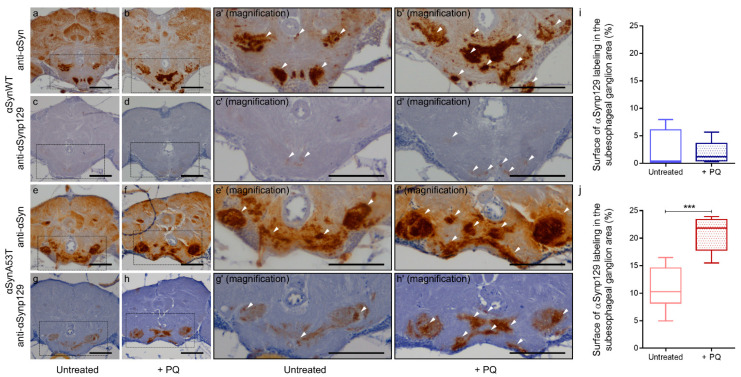Figure 8.
Chronic exposure to Paraquat induces the accumulation of αSynp129. In brains of αSynA53T-expressing flies. Immunohistochemistry was performed using anti-αSyn (MJFR1) (a,b,e,f) or anti-αSynp129 (EP1536Y) (c,d,g,h) antibodies on paraffin-embedded brain sections of αSynWT (a–d) or αSynA53T (e–h) expressing flies untreated or exposed to PQ (+PQ) at LT50. Magnification of area indicated in (a–d) are shown in (a’–d′). Magnification of area indicated in (e–h) are shown in (e’–h′). White arrowheads indicate αSyn or αSynp129 deposits. The scale bar is 30 μm. Quantifications show the surface of αSynp129 (EP1536Y) labeling in subesophageal ganglion area for αSynWT (i) or αSynA53T (j) in control (untreated) or PQ exposed (+PQ) flies. In the box and whisker plots in (i,j), boxes extend from the first to the third quartile, the line inside the boxes shows the median and the whiskers represent the min/max value of 10 independent experiments: αSynWT (n = 4 for untreated, n = 5 for PQ) or αSynA53T (n = 8 for untreated, n = 10 for PQ). p-values of the group differences were calculated using the Mann–Whitney test (*** p = 0.0002).

